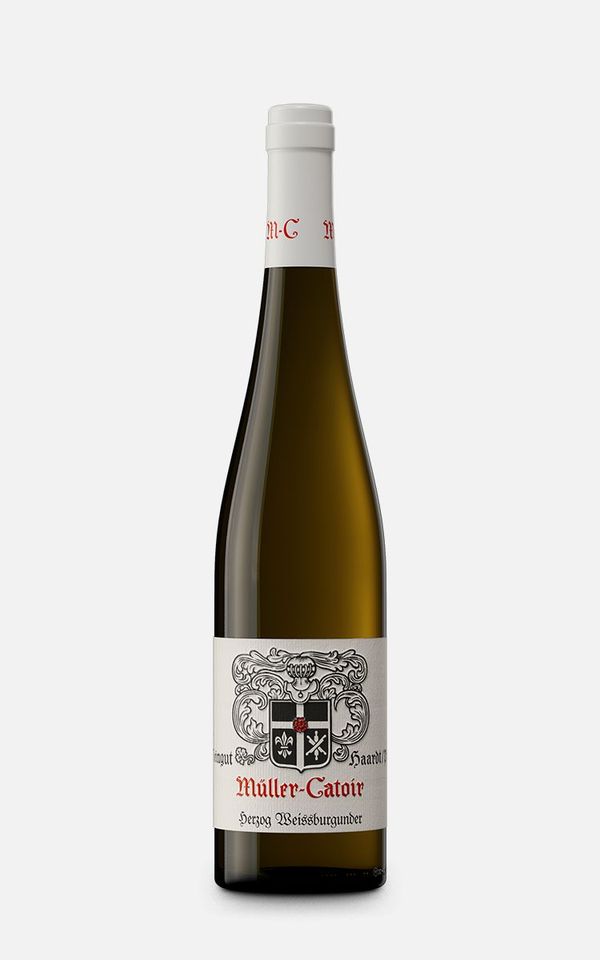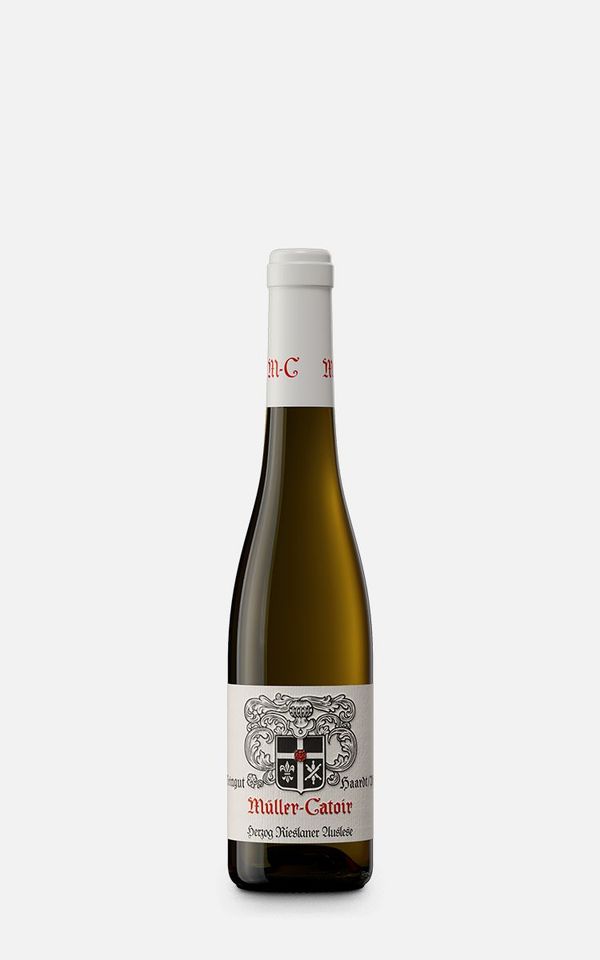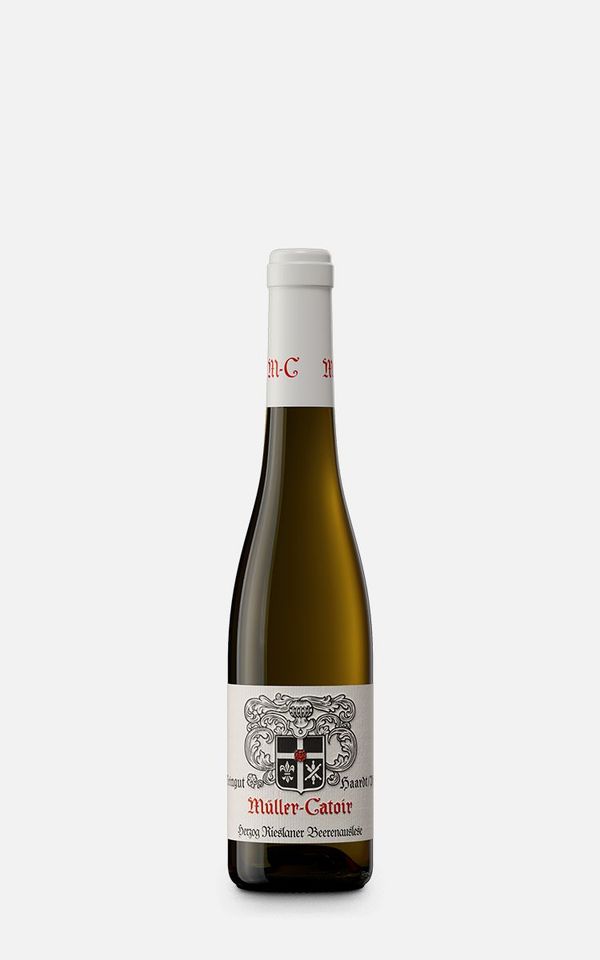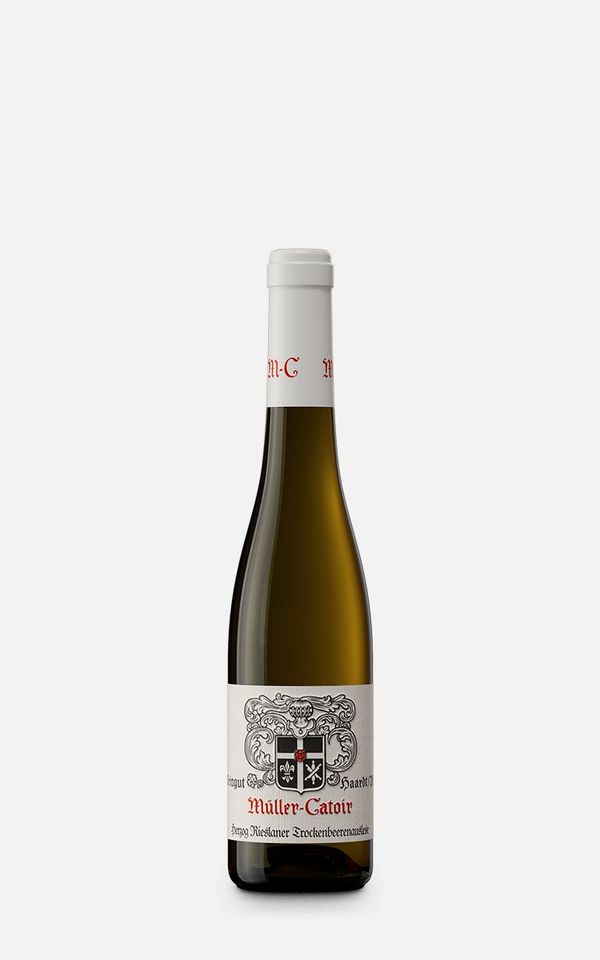The vineyard
Herzog
The Haardt Herzog lies below the Haardt quarry, where a special yellow-white sandstone has been mined since the mid-18th century. This Haardt sandstone is mainly found as a soil structure. The name "Herzog" is based on a late medieval family name. Most of the vineyards are now in a nature reserve.
A Haardt sandstone debris fan forms the base and characterizes the soil of the vineyard. The sandstone is medium to coarse-grained and porous. Its mineral grains are mainly firmly cemented by quartz cement. Clay and kaolinite (porcelain clay) are found in the remaining gaps between the grains. The compact sandstone is mined as building stone above the vineyard. Multiple freezing and thawing over hundreds of thousands of years of ice age weathering produced large amounts of slope debris. Frost cracking broke the rocks down into a mixture of stones, gravel, sand and loamy clay. Water and gravity transported the mixture down the slope. Coarse and medium-grained, well-rounded quartz sand mixed with loamy clay containing kaolinite determines the soil structure. In the upper part of the vineyard, the soil cover is a few decimetres in places. Large Haadt sandstones lie at a shallow depth in places. In the middle and lower parts, the soil cover increases, but never reaches the depth of the Bürgergarten. The porous sandstones in the soil and subsoil are good water reservoirs. The water supply is not abundant but sufficient. In search of water and nutrients, the vine pushes deep roots into cracks and crevices in the sandstones. The sandstone heats up quickly in the sun and, as a heat reservoir, determines the microclimate.
A Haardt sandstone debris fan forms the base and characterizes the soil of the vineyard. The sandstone is medium to coarse-grained and porous. Its mineral grains are mainly firmly cemented by quartz cement. Clay and kaolinite (porcelain clay) are found in the remaining gaps between the grains. The compact sandstone is mined as building stone above the vineyard. Multiple freezing and thawing over hundreds of thousands of years of ice age weathering produced large amounts of slope debris. Frost cracking broke the rocks down into a mixture of stones, gravel, sand and loamy clay. Water and gravity transported the mixture down the slope. Coarse and medium-grained, well-rounded quartz sand mixed with loamy clay containing kaolinite determines the soil structure. In the upper part of the vineyard, the soil cover is a few decimetres in places. Large Haadt sandstones lie at a shallow depth in places. In the middle and lower parts, the soil cover increases, but never reaches the depth of the Bürgergarten. The porous sandstones in the soil and subsoil are good water reservoirs. The water supply is not abundant but sufficient. In search of water and nutrients, the vine pushes deep roots into cracks and crevices in the sandstones. The sandstone heats up quickly in the sun and, as a heat reservoir, determines the microclimate.
- Vineyard
- Region: Pfalz
- Vineyard site: Haardter Herzog
- Soil: Haardtsandstein
- Vines: 6-23 years
- Height above sea level: 157-200 m
- Slope: steep 30%, sloped 70%
- Direction: SE
- Download
- Expertise (PDF)
- Classification
- VDP.Erste Lage
- Wines from this location
- Weißburgunder Erstes Gewächs Herzog
- Rieslaner Auslese Herzog
- Rieslaner Beerenauslese Herzog
- Rieslaner Trockenbeerenauslese Herzog







